
ASSESSING THE
ECONOMIC IMPACTS OF
ALASKA AIRLINES
OCTOBER 2018
OCTOBER 2018

PROJECT TEAM
Andrew Bjorn, Project Manager
Brian Murphy, Principal
Claire Miccio, Senior Associate
Kristin Maidt, Associate
Sherrie Hsu, Associate
“Helping Communities and Organizations Create Their Best Futures”
Founded in 1988, we are an interdisciplinary strategy and analysis rm providing integrated,
creative and analytically rigorous approaches to complex policy and planning decisions.
Our team of strategic planners, policy and nancial analysts, economists, cartographers,
information designers and facilitators work together to bring new ideas, clarity, and robust
frameworks to the development of analytically-based and action-oriented plans.
2200 Sixth Avenue, Suite 1000
Seattle, Washington 98121
P (206) 324-8760
www.berkconsulting.com

SUMMARY
Since its founding in 1932, Alaska Airlines has grown to become the fth-largest air carrier
in the United States, providing service that connects 44 million guests a year to over 115
destinations in the US, Mexico, Canada, and Costa Rica. To achieve this growth, Alaska has
had several periods of strategic expansion. Alaska Air Group (AAG), which includes Alaska
Airlines, Horizon Air, and McGee Air Services, most recently acquired and integrated Virgin
America in 2016.
The Seattle metropolitan area is an important partner in Alaska Airlines’ development
as it has been home to the corporate headquarters since the 1940s. Today, about
40% of the 21,000 employees with Alaska Airlines and Horizon Air are sited at the
corporate headquarters in SeaTac, WA and the main hub at Sea-Tac International Airport.
Understanding the role of Alaska Airlines in the regional economy and communities
throughout the state is essential for managing regional and statewide partnerships. Alaska
Airlines provides benets across different areas, ranging from increased economic activity
from operations to improved regional, national, and international access for business
travelers and tourists.
Some of the major economic impacts from AAG operations include:
The total economic impact of AAG companies
across the economy of Washington state was $7
billion in 2017 and has grown at an average
of 5.9% per year over the past ve years. This
total impact consists of about $4.1 billion in
direct impacts, $1.6 billion in indirect impacts,
and $1.2 billion in induced impacts.
The operations of AAG companies supported
23,561 jobs in Washington state in 2017.
This includes 9,916 jobs directly with AAG
companies, as well as 5,978 jobs with
companies in the supply chain and 7,667 jobs
supported by the earnings of employees. This
amounts to a total of 2.4 jobs in the economy
for every job with AAG companies, or about
5.7 jobs per $1 million in output.
i
ASSESSING THE ECONOMIC IMPACT OF ALASKA AIRLINES · ALASKA AIRLINES
OCTOBER 2018

Alaska Airlines and Horizon Air accommodated
22 million passengers through Seattle-Tacoma
International Airport, representing about half
of all trafc from Seattle’s main airport.
Passenger service supports access to national
and international destinations for cities across
Washington state.
Over the past ve years, Alaska Airlines has
made nearly $2.4 billion worth of aircraft
purchases from Boeing, which created $3.4
billion of additional economic activity in
Washington. This activity has also supported an
average of nearly 1,600 jobs across the state
per year.
AAG companies did business with 3,557
vendors in 2017, which has more than doubled
the number of companies in its immediate
supply chain over the past ve years. This has
expanded the number of regional businesses
that benet from growth of AAG companies,
and provides exposure to locally sourced
products, primarily food and beverages, with
airline customers.
Outgoing cargo from Seattle-Tacoma
International Airport amounted to $24 million
in freight revenue in 2017, which is 97%
of the total cargo revenue generated from
Washington state airports. Alaska Air Cargo
has recently increased its freight capacity,
which will increase cargo services as a business
line in the future.
In 2017, AAG companies provided about
$15.5 million in corporate donations, including
cash grants and nancial support, travel, and
employee volunteer time. Washington state
charities received $8 million in 2017, more than
half of total corporate donations.
ALASKA AIRLINES · ASSESSING THE ECONOMIC IMPACT OF ALASKA AIRLINES
ii SUMMARY · OCTOBER 2018

CONTENTS
INTRODUCTION 1
ECONOMIC IMPACTS 3
Employment 3
Direct Employment 3
Employment Effects 6
Labor Union Participation 8
Business Operations 9
Capital Expenditures 11
Aircraft Procurement 11
Investment in Facilities 12
Suppliers 13
PASSENGER TRAFFIC AND TRENDS 17
Overview 17
International Destinations 18
North American Destinations 20
Washington State Destinations 23
CARGO SERVICES 25
CHARITABLE GIVING 27
CONCLUSIONS 31
iii
ASSESSING THE ECONOMIC IMPACT OF ALASKA AIRLINES · ALASKA AIRLINES
OCTOBER 2018

ALASKA AIRLINES · ASSESSING THE ECONOMIC IMPACT OF ALASKA AIRLINES
iv CONTENTS · OCTOBER 2018

INTRODUCTION
Since 1932, Alaska Airlines has grown from the Alaskan bush pilots of McGee Airways
and Star Air Service into the fth-largest air carrier in the US, and the only major airline
headquartered on the West Coast. Currently, it provides service to destinations in US,
Mexico, Canada, and Costa Rica through direct ights, and worldwide through Alaska
Global Partners. Alaska Airlines’ growth has been marked by periods of strategic expansion.
Alaska Air Group (AAG), which includes Alaska Airlines, Horizon Air, and McGee Air
Services, most recently acquired and integrated Virgin America in 2016.
Alaska Airlines has been headquartered in the Seattle area since the 1940s, and regular
air service to Anchorage and Fairbanks from Seattle began in the 1950s. Alaska Airlines
has been a reliable customer for Boeing commercial jet aircraft since 1966, when the rst
Boeing 727–100 planes were put into service with the Alaska Airlines eet. Currently, many
of the over 21,000 employees of Alaska Air Group companies work at the Alaska Airlines
corporate headquarters in SeaTac, WA and the hub at Sea-Tac International Airport.
Assessing the impacts of Alaska Air Group companies on the regional economy and on
communities throughout the state is essential to understanding the role Alaska Airlines plays
in the state. In addition to its role as a major employer, Alaska Airlines has a major hub for
national and international passenger travel and cargo at Sea-Tac International Airport,
providing the state and region with greater accessibility to destinations for business and
tourism worldwide in cooperation with Alaska Global Partners. The charitable contributions
made by Alaska Airlines to organizations in the state support important causes in the Seattle
region. Additionally, Alaska Airlines supports the local economy by sourcing from local
suppliers and providing a platform for advertising for local companies.
To provide a greater understanding of these roles, this report presents a review of the
impacts of Alaska Airlines and the other AAG companies on the state of Washington and the
Seattle region. This study focuses on the benets associated with having the primary hub and
headquarters for Alaska Airlines located in the region and highlights how these benets have
grown in recent years.
1
ASSESSING THE ECONOMIC IMPACT OF ALASKA AIRLINES · ALASKA AIRLINES
OCTOBER 2018

The report is organized into four main sections:
We describe the economic impacts of AAG companies within the Seattle region and the
state, including the major roles Alaska Airlines plays in local and state economies.
Passenger trafc information is also provided to highlight how passenger services
support international, national, and regional access to the state.
We provide a review of cargo services provided by Alaska Airlines to explain how this
activity contributes to the local economy.
The effects of charitable giving on local communities are described, with a description
of how Alaska Airlines works with community partners on projects and ongoing initiatives.
ALASKA AIRLINES · ASSESSING THE ECONOMIC IMPACT OF ALASKA AIRLINES
INTRODUCTION · OCTOBER 20182

ECONOMIC IMPACTS
Alaska Air Group companies provide signicant economic benets to the Seattle metropolitan
area and the state of Washington. These benets relate not only to local employment, but
also to the activities necessary to support airline operations and the business activity spurred
by this spending. This is due primarily to the role of the Seattle metropolitan area as the
major hub and headquarters for Alaska Airlines and other AAG companies.
This section outlines the economic impacts associated with the operations in the Seattle
metropolitan area and Washington state, with a focus on employment, local suppliers, and
local aircraft procurement. This analysis was conducted using the IMPLAN economic impact
model, which relies on available data from national and regional economic accounts to
support state and regional input-output analysis.
EMPLOYMENT
Direct Employment
AAG companies have employed a growing number of people over the last ten years,
offering a variety of jobs at over 100 locations. In addition to growth in Alaska Airlines and
Horizon Air, there have also been other recent corporate expansions:
AAG acquired Virgin America for $2.6 billion in 2016 and over 90% of the
integration milestones will be complete by 2019.
In 2016, McGee Air Services was created as a subsidiary of Alaska Airlines to
provide airline support services, including baggage handling and gate agent
services. This subsidiary, headquartered in Renton, also provides airline support
services in Phoenix, Portland, San Jose, and San Francisco.
Exhibit 1 shows employment at AAG companies for all airports in Washington, and Exhibit 2
provides Alaska Airlines and Horizon Air jobs at major hubs and focus cities. Looking more
broadly at employment with AAG companies, Exhibit 3 shows the location of all employees
of Alaska Airlines and Horizon Air, and Exhibit 4 provides trends for this employment at
major airports.
3
ASSESSING THE ECONOMIC IMPACT OF ALASKA AIRLINES · ALASKA AIRLINES
OCTOBER 2018

Exhibit 1 Employment with Alaska Air Group companies in Washington state, 2017.
COMPANY
EMPLOYMENT AT WASHINGTON AIRPORTS
TOTALSEA GEG BLI PSC EAT PUW YKM ALW
Alaska Airlines
1
7,475 - 2 - - - - - 7,477
Horizon Air 1,021 281 45 20 17 17 16 13 1,430
McGee Air Services 1,009 - - - - - - - 1,009
Total 9,505 281 47 20 17 17 16 13 9,916
Source: Alaska Airlines, 2018; BERK, 2018.
1
Alaska Airlines totals include previous Virgin America employees
Exhibit 2 Alaska Airlines and Horizon Air jobs by hubs/focus cities outside Washington state, 2017.
COMPANY
EMPLOYMENT AT HUB/FOCUS CITY AIRPORTS
ALL EMPLOYEESPDX LAX SFO ANC SAN
Alaska Airlines
1
1,231 2,095 1,745 1,242 539 17,382
Horizon Air 1,333 233 - 49 - 3,940
Total 2,564 2,328 1,745 1,291 539 21,322
Source: Alaska Airlines, 2018; BERK, 2018.
1
Alaska Airlines totals include previous Virgin America employees
ALASKA AIRLINES · ASSESSING THE ECONOMIC IMPACT OF ALASKA AIRLINES
ECONOMIC IMPACTS · OCTOBER 20184
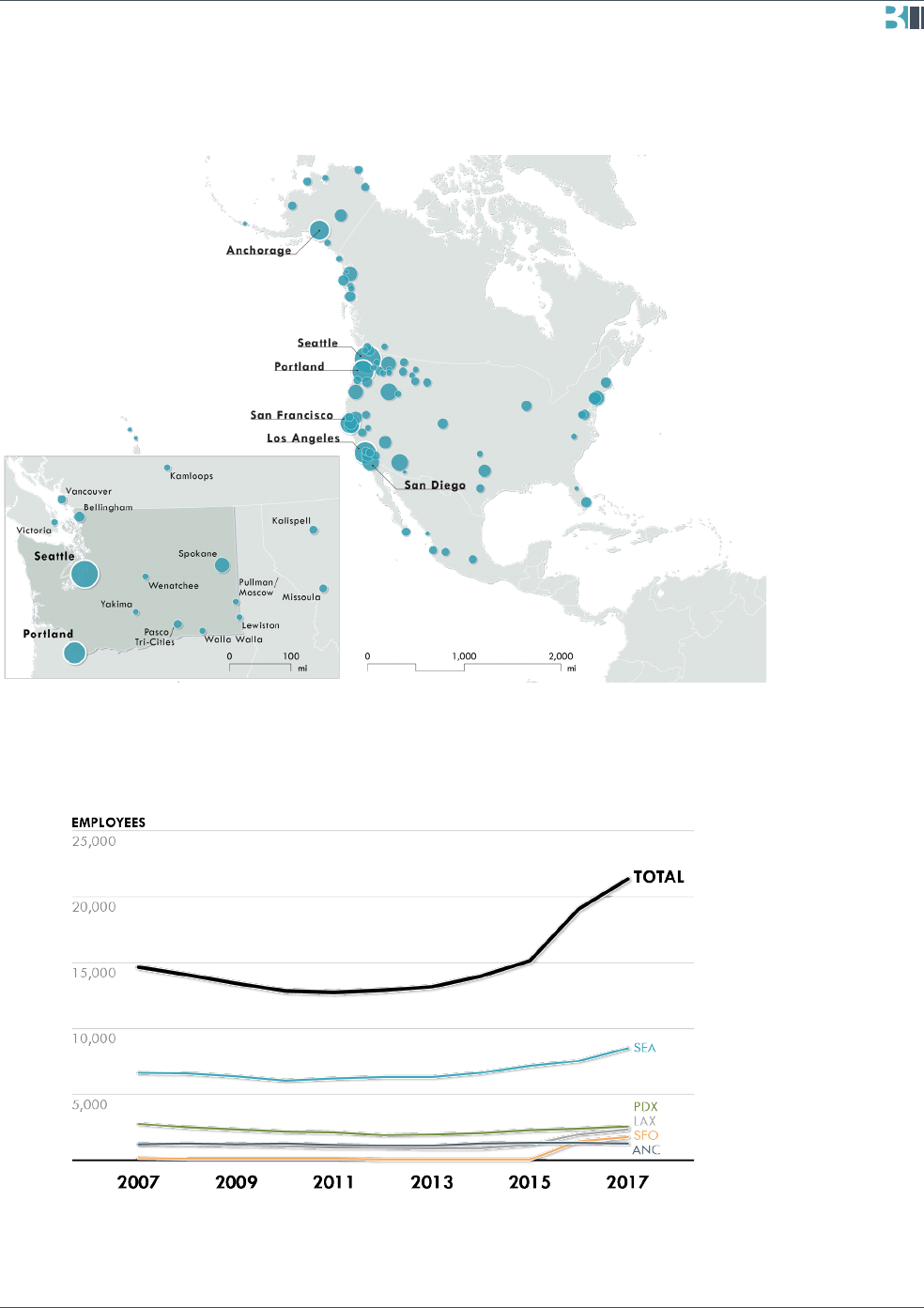
Exhibit 3 Employee locations for Alaska Air Group airlines, 2017.
Source: Alaska Airlines, 2018; BERK, 2018..
Exhibit 4 Total employment, Alaska Airlines and Horizon Air, 2007–2017.
Source: Alaska Airlines, 2018; BERK, 2018.
5
ASSESSING THE ECONOMIC IMPACT OF ALASKA AIRLINES · ALASKA AIRLINES
OCTOBER 2018 · ECONOMIC IMPACTS

Key highlights include the following:
Seattle and Washington state are a major site for employment in AAG
companies. As of 2017, AAG companies had 9,916 employees in Washington
state, with 7,475 jobs with Alaska Airlines, 1,021 with Horizon Air, and 1,009 with
McGee Air Services. This includes about 40% of all Alaska Airlines and Horizon
Air employment, which are primarily located at Sea-Tac International Airport and
Seattle area headquarters.
Total employment with AAG companies is growing signicantly. Over the past
ve years, total employment with Alaska Airlines and Horizon Air grew by about
35% at the Seattle hub, or about 6.2% per year. During that same period, overall
employment with Alaska Airlines grew by 36%, and Horizon Air by 32%. The
integration of Virgin America into Alaska Airlines has added 3,516 employees
company-wide above this growth, and the creation of McGee Air Services has
added another 1,009 jobs in the Seattle metropolitan area.
Employment Effects
In addition to direct employment, AAG companies support other types of employment in
communities across the state, including:
Indirect employment by suppliers and other businesses that do business with AAG
companies.
Induced employment by businesses that support the employees of AAG companies
and their suppliers.
For this analysis, employment effects for AAG companies are framed in two ways:
The effects of employment at AAG companies’ headquarters and the Seattle-
Tacoma International Airport within the Seattle metro area.
The effects of employment statewide by AAG companies.
Exhibit 5 provides a summary of the total employment effects at the Seattle metropolitan
and state levels for 2017, and Exhibit 6 presents the trends of the employment impacts for
operations across the state.
This overall analysis of employment impacts indicates the following:
Statewide, AAG companies supported 23,561 jobs in 2017. In addition to the
9,916 direct employees of AAG companies, including Alaska Airlines, Horizon Air,
and McGee Air Services, an additional 5,978 jobs are supported through the supply
chain, and 7,667 jobs are supported with induced demand from households.
ALASKA AIRLINES · ASSESSING THE ECONOMIC IMPACT OF ALASKA AIRLINES
ECONOMIC IMPACTS · OCTOBER 20186

Exhibit 5 Total employment impacts for AAG companies, Seattle
metropolitan area and Washington state, 2017.
ECONOMIC IMPACT
JOBS
MULTIPLIERDIRECT INDIRECT INDUCED TOTAL
Seattle metropolitan area 9,505 5,320 6,758 21,583 2.27
Statewide 9,916 5,978 7,667 23,561 2.38
Source: Alaska Airlines, 2018; BERK, 2018.
Exhibit 6 Total employment impacts of AAG companies
in Washington state, 2010–2017.
Source: Alaska Airlines, 2018; BERK, 2018.
7
ASSESSING THE ECONOMIC IMPACT OF ALASKA AIRLINES · ALASKA AIRLINES
OCTOBER 2018 · ECONOMIC IMPACTS

The Seattle metropolitan area is a major employment center for AAG companies
in the state. A majority of Washington state employees of AAG companies are in
the Seattle metropolitan area, with major operations at Sea-Tac International Airport
and major headquarters located in SeaTac and Renton. Altogether, this amounts
to 9,505 direct employees, with an additional 12,078 jobs supported through the
supply chain and induced demand from households.
Every job created by AAG companies in the state resulted in a total of 2.4 jobs
added to the economy in 2017. Additionally, every $1 million in demand for
services from AAG companies resulted in the creation of about 5.7 jobs across the
economy. These jobs are related both to activity in the supply chain and wages and
other earnings being spent in the local economy.
Total statewide employment impacts grew by 42% over the past ve years. In
2013, Alaska Airlines and Horizon Air supported 16,637 jobs across the entire state
economy, including 6,672 direct employees of these two companies. Over the past
ve years, the total employment impact across the state economy has increased by
about 42%, or about 9.1% per year, while direct employment has increased by
about 49%.
Contributions to local employment in the City of SeaTac are signicant. The
impacts of employment from AAG companies also impacts local communities as
well. From 2017 PSRC estimates of covered employment, AAG companies account
for about 23% of the jobs in SeaTac (outside of the self-employed and domestic
workers), where the Alaska Airlines headquarters is located.
Labor Union Participation
The rate of union participation by AAG companies is considerable: with at least 17,000
union members across Alaska Airlines, Horizon Air, and McGee Air Services, these companies
well exceed the industry average of 38% union membership. This high rate of membership
supports both workers’ rights and higher wage rates across the workforce.
The seven unions that provide representation to employees of AAG companies include the
following:
Association of Flight Attendants (AFA), representing about 6,300 ight attendants
with Alaska Airlines and Horizon Air, and comprising the largest representative of
employees across AAG companies.
International Association of Machinists (IAM), representing airport, reservation,
ofce and clerical staff, and ramp and stores agents with Alaska Airlines and ramp
agents of McGee Air Services.
ALASKA AIRLINES · ASSESSING THE ECONOMIC IMPACT OF ALASKA AIRLINES
ECONOMIC IMPACTS · OCTOBER 20188

Airline Pilots Association (ALPA), representing about 2,900 Alaska Airlines pilots.
International Brotherhood of Teamsters (IBT), representing 1,100 Horizon Air pilots
and technicians.
Airline Mechanics Fraternal Association (AMFA), representing about 700 aircraft
technicians with Alaska Airlines.
Transport Workers Union (TWU), representing dispatchers with Alaska Airlines and
Horizon Air.
Unifor, representing about 40 Horizon Air employees in Canada.
BUSINESS OPERATIONS
The benets of business activity from AAG companies in the state and region not only
includes the value of the services and the compensation provided to employees, but also
the impacts of spending by the companies and employees across the entire economy. These
effects can be divided into three main categories:
Direct impacts of the operations of AAG companies and the value of the goods and
services produced, including passenger and cargo services;
Indirect impacts resulting from spending on intermediate inputs, such as catering
services, airport fees, and fuel for aircraft; and
Induced impacts derived from the salaries and compensation of employees of AAG
companies and their suppliers being spent in the regional economy.
Exhibit 7 provides a summary of the total economic impacts from the activities of AAG
companies, with a chart of the total economic impact over time provided in Exhibit 8.
Key insights from this assessment include the following:
Alaska Air Group companies had an economic impact of about $7 billion in the
state in 2017. This overall impacts of AAG companies consists of about $4.1 billion
in direct impacts, $1.6 billion in indirect impacts, and $1.2 billion in induced impacts.
In 2017 dollars, this represents a 12% increase from 2016, and 5.9% yearly growth
on average over the past ve years.
Every dollar of output from AAG companies results in a total of 1.68 dollars of
economic activity for the Seattle metropolitan area. This includes an additional
9
ASSESSING THE ECONOMIC IMPACT OF ALASKA AIRLINES · ALASKA AIRLINES
OCTOBER 2018 · ECONOMIC IMPACTS
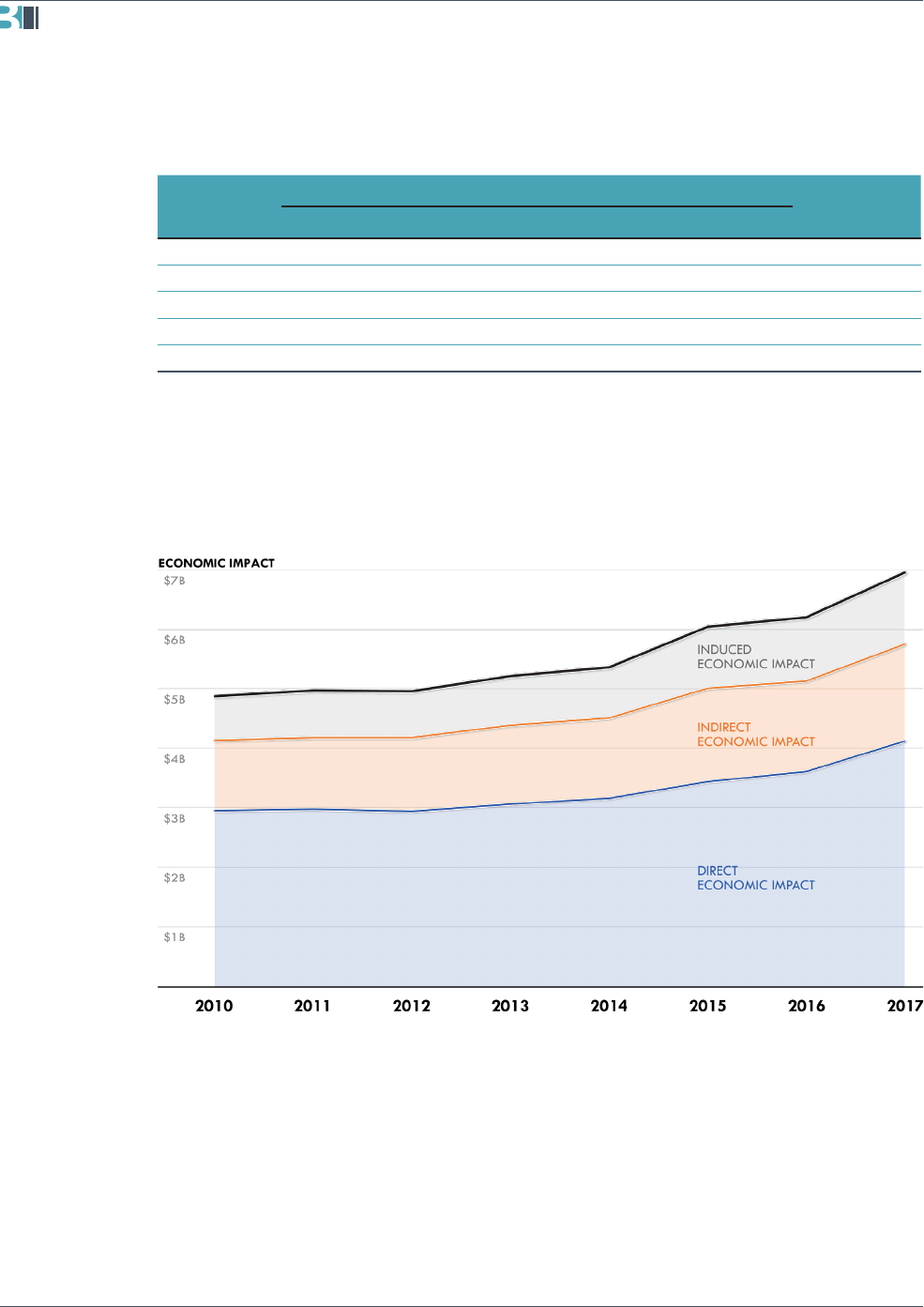
Exhibit 7 Total employment impacts for AAG companies, Seattle metropolitan
area and Washington state, 2017 dollars, 2013–2017.
YEAR
ECONOMIC IMPACT
ECONOMIC
MULTIPLIERDIRECT INDIRECT INDUCED TOTAL
2013 $3,063M $1,321M $829M $5,213M 1.7
2014 $3,154M $1,355M $855M $5,363M 1.7
2015 $3,439M $1,574M $1,025M $6,039M 1.8
2016 $3,609M $1,518M $1,071M $6,198M 1.7
2017 $4,124M $1,628M $1,202M $6,953M 1.7
Source: Alaska Airlines, 2018; BERK, 2018.
Exhibit 8 Summary of the total economic impact of AAG companies
in Washington state, 2017 dollars, 2010–2017.
Source: Alaska Airlines, 2018; BERK, 2018.
ALASKA AIRLINES · ASSESSING THE ECONOMIC IMPACT OF ALASKA AIRLINES
ECONOMIC IMPACTS · OCTOBER 201810

0.39 dollars from indirect impacts from the supply chain and 0.29 dollars from
induced impacts in the economy.
CAPITAL EXPENDITURES
In addition to the benets provided from ongoing business activities, capital expenditures
by AAG companies provide further economic activity in the state and region. These capital
expenditures are primarily related to aircraft procurement, but the construction of the new
facilities at the SeaTac corporate campus and Sea-Tac International Airport also represent
expenditures that will have economic impacts in the region and state.
Aircraft Procurement
As with any other airline, major capital expenditures are related to purchasing commercial
aircraft. For Alaska Airlines this amounted to approximately $511 million in expenditures in
2017 for eet expansion.
However, unlike many other airline companies these expenditures provide additional benets
for the state and region. The core of the Alaska Airlines aircraft eet consists of 157 Boeing
737s, which reects a relationship between Alaska Airlines and Boeing that has been in
place since the 1960s. Additional orders for new Boeing aircraft are currently in place,
including orders for the new Boeing 737 MAX 9 due to be delivered in 2019.
Exhibit 9 Statewide impacts of aircraft purchases by Alaska Airlines,
2017 dollars, 2013–2017.
YEAR
ECONOMIC IMPACT EMPLOYMENT
DIRECT INDIRECT INDUCED TOTAL DIRECT INDIRECT INDUCED TOTAL
2013 $379M $85M $70M $533M 407 353 447 1,207
2014 $473M $113M $89M $675M 481 474 564 1,519
2015 $584M $146M $113M $843M 612 623 732 1,966
2016 $452M $114M $87M $654M 468 479 557 1,505
2017 $511M $129M $99M $739M 529 542 630 1,701
Source: Alaska Airlines, 2018; BERK, 2018.
11
ASSESSING THE ECONOMIC IMPACT OF ALASKA AIRLINES · ALASKA AIRLINES
OCTOBER 2018 · ECONOMIC IMPACTS

The purchase of new, locally-built aircraft like the 737 provides additional demand for the
local aircraft manufacturing industry, which in turn supports employment and further economic
activity. Exhibit 9 shows the annual effect of aircraft purchases on the regional economy (in
2017 dollars), including the indirect impacts on aircraft suppliers and induced effects from
additional employment statewide.
Highlights from this analysis include the following:
Local purchases of aircraft increase economic activity in the Seattle area. Since
2013, Alaska Airlines has spent nearly $2.4 billion in aircraft from Boeing (in 2017
dollars), which has resulted in over $3.4 billion of new economic activity in the state.
These impacts are most noticeable with Boeing operations in Renton, but there are
also wider impacts for aerospace suppliers and other businesses statewide.
Aircraft procurement also supports local aerospace jobs and other employment.
Purchases of Boeing aircraft also support local aerospace manufacturing, suppliers,
and other businesses. Altogether, direct employment supported from purchases over
the past ve years averages about 500 jobs, with an additional 1,080 jobs arising
from related demands in the economy.
Investment in Facilities
In the Seattle metropolitan region, there are also major projects for facilities investment that
Alaska Airlines is currently pursuing:
Alaska Airlines hub expansion (Copper River Project). Alaska Airlines is currently
pursuing a long-term four-phase development of a 6.8-acre site adjacent to the
Alaska Airlines headquarters in the city of SeaTac. The rst phase of this project,
expected to be completed by early 2020, includes a new 128,000-square-foot
ofce building (“The Hub”), parking garage, and pedestrian improvements across
International Boulevard. The ofce building will accommodate recruiting, uniform
tting, operations, e-commerce, and IT staff. Overall, this represents a long-term
investment in SeaTac as a focus location for the company.
Seattle-Tacoma International Airport. Alaska Airlines has been working with the
Port of Seattle on ongoing improvements to the airport to accommodate increasing
volumes of trafc and modernize older facilities. The North Satellite Modernization
Project, expected to be complete by 2021, will update the existing North Satellite
with new environmentally-conscious upgrades that will provide improvements to
passenger services, employee workspaces, baggage handling, and accessibility.
Alaska Airlines will contribute $41 million to this work, which will include the
construction of a new lounge facility for the airline.
ALASKA AIRLINES · ASSESSING THE ECONOMIC IMPACT OF ALASKA AIRLINES
ECONOMIC IMPACTS · OCTOBER 201812

New Paine Field (PAE) service. Alaska Airlines also announced in 2017 that it will
begin ights from Paine Field in Everett to provide additional connections for the
north Seattle metro area. Non-stop ights to eight West Coast cities have been
announced, which will be supported by a new terminal built and operated by
Propeller Airports. This new passenger service and supporting facilities will provide
additional benets for Snohomish County and areas to the north of Seattle.
SUPPLIERS
The relationships that Alaska Airlines has with major and minor suppliers are important to
the overall economic impact on the metropolitan area and state. These connections promote
employment to the wider community and bring the benets of growth in business to the
Seattle metropolitan area and Washington as a whole.
Exhibit 10 provides a summary of the number of vendors and contractors in Washington
state, and Exhibit 11 shows the distribution of expenditures to vendors and other agencies by
jurisdiction for the state and the immediate Seattle metropolitan area (for total charges over
$50,000 between 2013 and 2017 only).
Vendors included in this summary are from the following supplier categories:
Catering
Commercial real estate management
Deicing
Fleet agents
Fueling
Health insurance
IT support
Maintenance
For cities with airports, major expenses are associated with landing fees, facility rents, and
other costs for the use of airport facilities. However, the largest single set of vendor expenses
is with the company health insurance provider operating in Seattle, which is a substantial
share of total vendor activity.
This information about vendor distribution indicates the following:
Alaska Airlines is expanding the use of vendors. Alaska Airlines increased the
number of vendors in their supply chain from 1,719 in 2013 to 3,557 in 2017,
doubling the number of these suppliers in ve years. This represents about 16%
13
ASSESSING THE ECONOMIC IMPACT OF ALASKA AIRLINES · ALASKA AIRLINES
OCTOBER 2018 · ECONOMIC IMPACTS
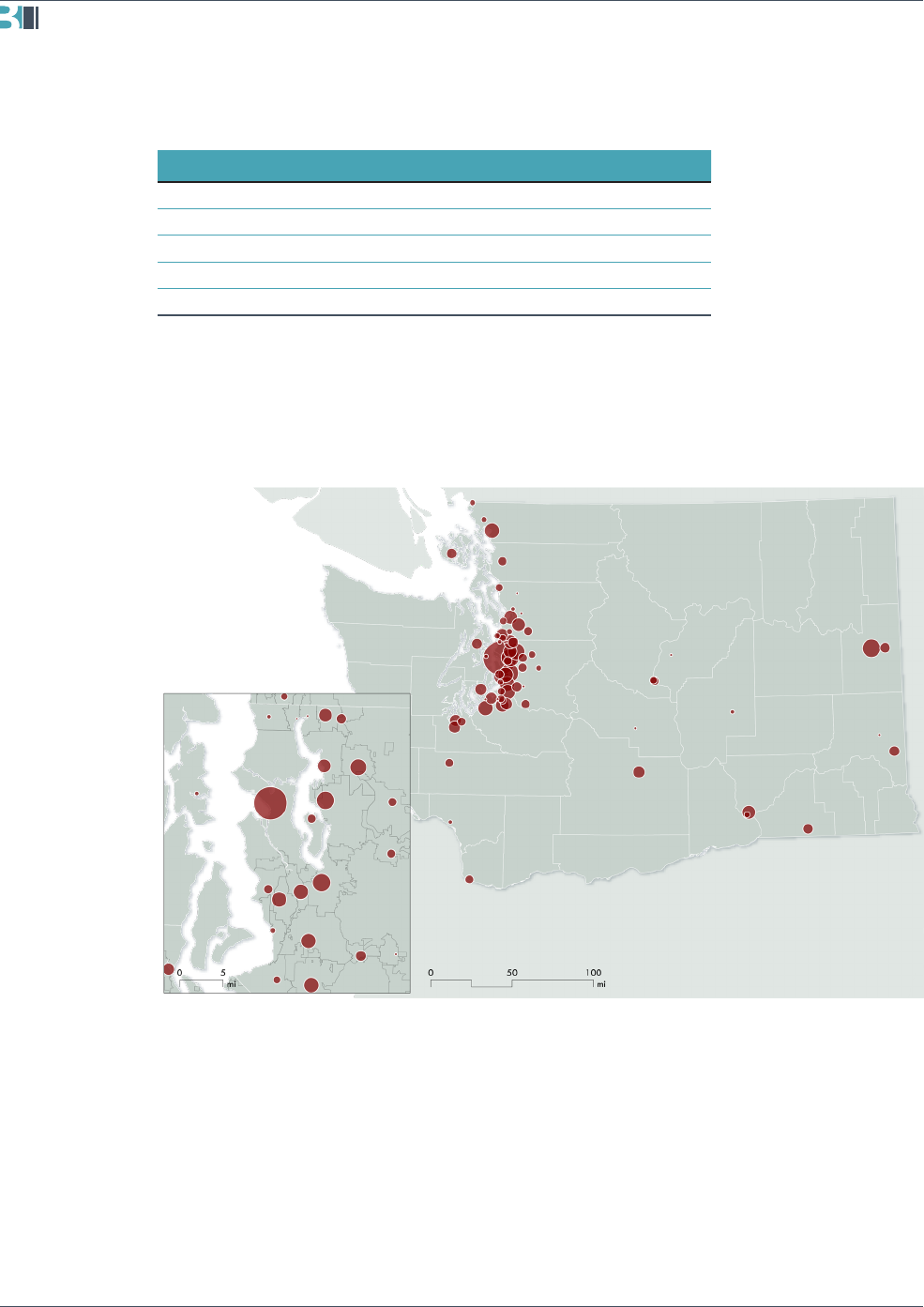
Exhibit 10 Number of Alaska Airlines vendors and contractors, 2012–2017.
YEAR VENDORS CONTRACTORS
2013 1,719 17
2014 2,027 16
2015 2,365 15
2016 2,934 12
2017 3,557 38
Source: Alaska Airlines, 2018; BERK, 2018.
Exhibit 11 Distribution of major vendor spending by Alaska
Airlines in Washington cities, 2012–2017.
Source: Alaska Airlines, 2018; BERK, 2018.
ALASKA AIRLINES · ASSESSING THE ECONOMIC IMPACT OF ALASKA AIRLINES
ECONOMIC IMPACTS · OCTOBER 201814

growth per year in the vendor roster, and it expands the ability for businesses in the
region to benet from the expansion of Alaska Airlines.
Vendors are clustered in the Seattle metro area. Generally, the distribution of
vendors is clustered in the Seattle metropolitan area, with minor clusters around
other airports in Washington state and in the state capital. This indicates that the
supply chains for Alaska Airlines are strongly tied to the metro area, and the indirect
impacts associated with the supply chain are focused there as well.
The company provides opportunities to market Washington state products at
the national and international level. Alaska Airlines and Horizon Air give local
businesses visibility with passengers through in-ight service, especially those that
produce gourmet food and drinks. Starbucks and AAG companies have partnered
for 28 years to provide customers with fresh brewed coffee on board ights.
These opportunities have extended to other Seattle-area companies as well, with
companies such as Beecher’s Cheese, Cucina Fresca Gourmet Foods, Tim’s Potato
Chips, Emily’s Chocolate, and Tree Top highlighted in meal services. Paired with
high customer satisfaction with the Alaska Airlines and Horizon Air brand, this can
signicantly boost positive market exposure.
15
ASSESSING THE ECONOMIC IMPACT OF ALASKA AIRLINES · ALASKA AIRLINES
OCTOBER 2018 · ECONOMIC IMPACTS

ALASKA AIRLINES · ASSESSING THE ECONOMIC IMPACT OF ALASKA AIRLINES
ECONOMIC IMPACTS · OCTOBER 201816

PASSENGER TRAFFIC
AND TRENDS
OVERVIEW
Alaska Airlines and Horizon Air are primarily passenger airlines, with ights to destinations
in North America and continuing services for world-wide destinations through Alaska Global
Partners. Although hosting the headquarters of the company has economic benets for the
region, facilitating access to the world can also support Washington state communities in
several ways:
National and international business access for the Seattle region. As the Seattle metro
region maintains and expands its role as a major center for innovation and high-tech
industry, accessibility to the region is crucial. Alaska Airlines and Horizon Air provide
access through direct ights and ights with Alaska Global Partners across the region,
nation, and world.
International access to local and regional tourism. Alaska Airlines and Horizon Air
provide air services that bring tourists to the Seattle region and other locations in
Washington state from the US, Canada, and countries worldwide. This accessibility
catalyzes tourism throughout the state, encouraging visitors and spurring further growth in
the tourism industry.
Business access for smaller cities. Smaller cities in Washington served by Alaska
Airlines and Horizon Air can access national and international destinations, which
supports important business connections in other regions. This is especially important as
reliable and frequent air service is linked to local businesses accessing larger markets.
This section focuses on passenger trafc for three different categories of destinations:
International destinations, including destinations served by Alaska Airlines and Horizon
Air in Canada, Mexico, and Costa Rica, as well as other international locations accessible
by Alaska Global Partners.
National and North American destinations served by Alaska Airlines, Horizon Air, and
Alaska Global Partners.
Regional destinations within Washington state and the Pacic Northwest, including
locations primarily served by Horizon Air.
17
ASSESSING THE ECONOMIC IMPACT OF ALASKA AIRLINES · ALASKA AIRLINES
OCTOBER 2018

INTERNATIONAL DESTINATIONS
Passenger service to international locations,
both directly and through Alaska Global
Partners, supports access to the world from the
state and the Seattle region. It also provides
opportunities for international visitors to come
to the region, which is essential for business
and tourism.
Exhibits 12 and 13 provide the top worldwide
destinations for customers of Alaska Airlines,
Horizon Air, and Alaska Global Partners that
have touched Seattle by starting or ending a
trip at Seattle-Tacoma International Airport,
or transiting through Seattle during an
international trip.
Key ndings from these statistics include the
following:
Alaska Airlines and Horizon Air support
global access to Seattle through Sea-Tac
Airport. Major international destinations
served by Alaska Airlines and Horizon
Air directly and through Alaska Global
Partners include key locations in Canada,
Mexico, Asia, and Europe, with many of
these locations reecting the growing roles
that Alaska Airlines and Horizon Air play
in making Seattle an international travel
hub.
Greater international access to and from Seattle is supported by the Alaska Airlines
network. Codeshares with Alaska Global Partners are also accessible through other
major hubs such as Los Angeles and San Francisco. This provides greater access to
international routes via Alaska Global Partners, which are key to supporting more
international passengers with the Alaska Airlines network.
ALASKA GLOBAL PARTNERS
As of 2018, Alaska Airlines has
relationships with the following
Alaska Global Partners for service to
additional national and international
destinations:
Aer Lingus
American Airlines
British Airways
Cathay Pacic
Condor
Emirates
Fiji Airways
Finnair
Hainan Airlines
Icelandair
Japan Airlines
Korean Air
LATAM Airlines
PenAir
Qantas
Ravn Alaska
Singapore Airlines
ALASKA AIRLINES · ASSESSING THE ECONOMIC IMPACT OF ALASKA AIRLINES
PASSENGER TRAFFIC AND TRENDS · OCTOBER 201818

Exhibit 13 Top international passenger volumes touching Seattle by origin/destination,
Alaska Airlines, Horizon Air, and Alaska Global Partners, 2017.
2017 PASSENGER VOLUME
2016 TOTAL
VOLUME CHANGEORIGIN DESTINATION TOTAL
YVR Vancouver, BC 128,351 139,454 267,805 279,138 -4.1%
YYJ Victoria, BC 67,959 78,125 146,084 153,622 -4.9%
SJD Cabo San Lucas, Mexico 70,926 70,842 141,768 137,100 3.4%
PVR Puerto Vallarta, Mexico 57,705 58,157 115,862 104,275 11.1%
YYC Calgary, AB 52,817 59,317 112,134 114,897 -2.4%
YEG Edmonton, AB 46,850 54,642 101,492 112,087 -9.5%
YLW Kelowna, BC 41,106 45,431 86,537 96,769 -10.6%
CUN Cancun, Mexico 29,483 29,563 59,046 56,774 4.0%
PEK Beijing, China* 21,272 28,134 49,406 49,116 0.6%
PVG Shanghai, China* 15,498 18,510 34,008 28,265 20.3%
GDL Guadalajara, Mexico 15,438 13,308 28,746 34,618 -17.0%
ICN Seoul, South Korea – Incheon
International*
14,409 13,828 28,237 31,104 -9.2%
MZT Mazatlán, Mexico 11,385 12,182 23,567 21,363 10.3%
FRA Frankfurt, Germany* 10,935 10,991 21,926 22,056 -0.6%
LHR London, United Kingdom –
Heathrow*
10,503 9,934 20,437 21,011 -2.7%
MNL Manila, Philippines* 10,737 8,991 19,728 18,172 8.6%
Source: Alaska Airlines, 2018; BERK, 2018.
Exhibit 12 International passenger volume touching Seattle by origin/destination,
Alaska Airlines, Horizon Air, and Alaska Global Partners, 2017.
Source: Alaska Airlines, 2018; BERK, 2018.
19
ASSESSING THE ECONOMIC IMPACT OF ALASKA AIRLINES · ALASKA AIRLINES
OCTOBER 2018 · PASSENGER TRAFFIC AND TRENDS

NORTH AMERICAN DESTINATIONS
Outside of Washington, Alaska Airlines and
Horizon Air provide passenger service to 76
destinations across 34 states. In addition to
the headquarters at Sea-Tac, Alaska Airlines
has major hubs in Anchorage, Los Angeles,
San Francisco, and Portland. Two “focus cities,”
San Diego and San Jose, are also bases for
frequent routes.
Exhibit 14 shows passenger volumes on Alaska
Airlines and Horizon Air ights in 2017 that
have originated, ended, or passed through
Sea-Tac International Airport, with Exhibit
15 showing statistics for ights to and from
US destinations, and Exhibit 16 showing
international destinations in Canada, Mexico,
and Costa Rica. Key conclusions from these
statistics include the following:
Sea-Tac Airport is a major hub for
Alaska Airlines and Horizon Air.
Nearly 15 million passenger trips pass
through Sea-Tac on Alaska Airlines
planes. According to US transportation
statistics, Alaska Airlines and Horizon
Air managed about 26 million of total
revenue passenger enplanements in 2017,
and over half the number of ights in the
Alaska Airlines system started or ended in
Sea-Tac.
Alaska Airlines provides a major
air connection to Alaska via Seattle.
Passenger trafc between Anchorage and
Sea-Tac accounts for 1.4 million total trips.
Given that Sea-Tac is the top origin and
destination for Anchorage, this reinforces
the historic transportation and economic
connections between Seattle and Alaska.
INTERNATIONAL DIRECT
SERVICE LOCATIONS
In addition to destinations in the
US, Alaska Airlines and Horizon Air
provides direct passenger service
locations in Canada, Mexico, and
Costa Rica:
Calgary International Airport
(YYC)
Cancún International Airport
(CUN)
Miguel Hidalgo y Costilla
International Airport,
Guadalajara (GDL)
Kelowna International Airport
(YLW)
Daniel Oduber Quirós
International Airport, Liberia,
Costa Rica (LIR)
Loreto International Airport (LTO)
Los Cabos International Airport,
Cabo San (SJD)
Playa de Oro International
Airport, Manzanillo (ZLO)
General Rafael Buelna
International Airport, Mazatlán
(MZT)
Mexico City International Airport
(MEX)
Licenciado Gustavo Díaz Ordaz
International Airport, Puerto
Vallarta (PVR)
Juan Santamaría International
Airport, San Jose, Costa Rica
(SJO)
Vancouver International Airport
(YVR)
Victoria International Airport
(YYJ)
Ixtapa-Zihuatanejo International
Airport (ZIH)
ALASKA AIRLINES · ASSESSING THE ECONOMIC IMPACT OF ALASKA AIRLINES
PASSENGER TRAFFIC AND TRENDS · OCTOBER 201820
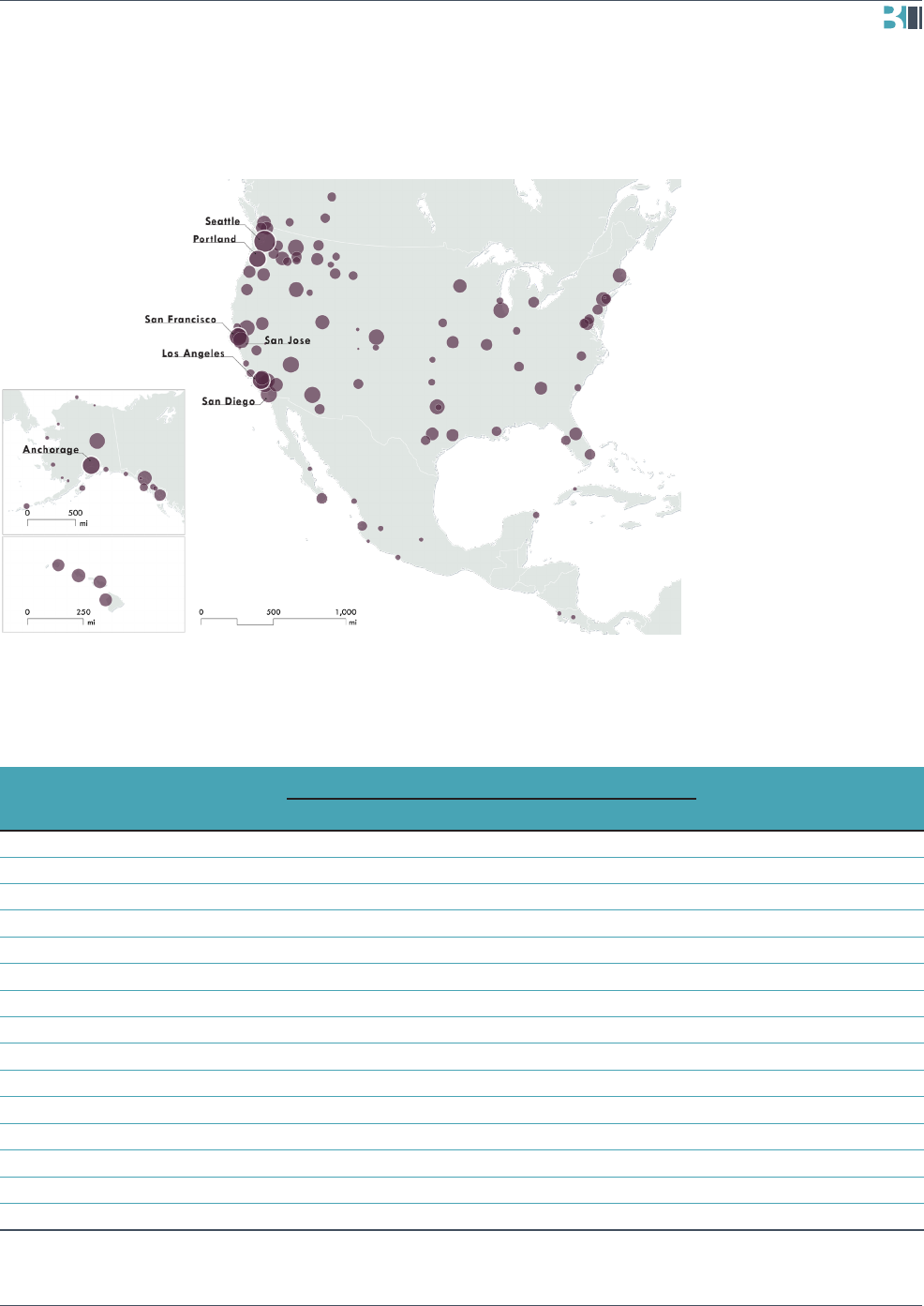
Exhibit 15 Top international passenger volumes touching Seattle by origin/destination,
Alaska Airlines, Horizon Air, and Alaska Global Partners, 2017.
2017 PASSENGER VOLUME
2016 TOTAL
VOLUME CHANGEORIGIN DESTINATION TOTAL
SEA Seattle, WA* 7,455,922 7,438,272 14,894,194 14,250,926 4.5%
ANC Anchorage, AK* 709,568 716,117 1,425,685 1,371,953 3.9%
LAX Los Angeles, CA* 703,223 695,920 1,399,143 1,427,336 -2.0%
SFO San Francisco, CA* 530,810 545,686 1,076,496 1,026,157 4.9%
LAS Las Vegas, NV 473,817 472,895 946,712 910,516 4.0%
GEG Spokane, WA 425,582 416,262 841,844 897,015 -6.2%
PDX Portland, OR* 413,624 418,011 831,635 922,933 -9.9%
SAN San Diego, CA 362,097 359,298 721,395 684,200 5.4%
SJC San Jose, CA 328,487 327,646 656,133 644,042 1.9%
SNA Orange County, CA 315,154 315,978 631,132 652,280 -3.2%
PHX Phoenix, AZ 313,264 309,770 623,034 580,946 7.2%
DEN Denver, CO 256,683 253,951 510,634 483,570 5.6%
SMF Sacramento, CA 240,139 240,533 480,672 507,428 -5.3%
FAI Fairbanks, AK 217,833 219,556 437,389 418,091 4.6%
ORD Chicago, IL 210,456 214,324 424,780 423,930 0.2%
Source: Alaska Airlines, 2018; BERK, 2018.
Note: * indicates major hub in Alaska Airlines network
Exhibit 14 North American Alaska Airlines and Horizon Air passenger volume touching
Seattle, by origin or destination and percent of total airport volume, 2017.
Source: Alaska Airlines, 2018; BERK, 2018.
21
ASSESSING THE ECONOMIC IMPACT OF ALASKA AIRLINES · ALASKA AIRLINES
OCTOBER 2018 · PASSENGER TRAFFIC AND TRENDS

Exhibit 16 Alaska Airlines and Horizon Air passenger volume statistics for trips touching Seattle,
destinations in Canada, Mexico, and Costa Rica, 2017.
2017 PASSENGER VOLUME
2016 TOTAL
VOLUME CHANGEORIGIN DESTINATION TOTAL
YVR Vancouver, Canada 130,203 141,099 271,302 276,574 -1.9%
YYJ Victoria, Canada 66,574 75,404 141,978 148,021 -4.1%
SJD Los Cabos, Mexico 69,186 68,705 137,891 133,799 3.1%
YYC Calgary, Canada 53,824 59,717 113,541 117,414 -3.3%
PVR Puerto Vallarta, Mexico 55,970 56,667 112,637 101,200 11.3%
YEG Edmonton, Canada 48,375 53,358 101,733 111,255 -8.6%
YLW Kelowna, Canada 41,024 43,931 84,955 91,259 -6.9%
CUN Cancún, Mexico 26,624 26,406 53,030 49,103 8.0%
GDL Guadalajara, Mexico 13,172 11,613 24,785 26,796 -7.5%
MZT Mazatlán, Mexico 10,479 11,695 22,174 19,773 12.1%
ZIH Zihuatanejo, Mexico 6,432 6,417 12,849 11,035 16.4%
LTO Loreto, Mexico 5,237 4,220 9,457 7,065 33.9%
SJO San Juan, Costa Rica 4,696 4,743 9,439 9,672 -2.4%
MEX Mexico City, Mexico* 3,937 5,315 9,252 N/A N/A
LIR Liberia, Costa Rica 4,225 4,029 8,254 8,051 2.5%
ZLO Manzanillo, Mexico 3,599 3,058 6,657 5,864 13.5%
Source: Alaska Airlines, 2018; BERK, 2018.
Alaska Airlines and Horizon Air connect Seattle to cities across the US and Canada.
In addition to the other connections in the Alaska Airlines network, passenger services
connect Sea-Tac to major destinations in California, Arizona, and Colorado. There are
also notable regional connections to western Canadian cities such as Victoria, Vancouver,
Edmonton, Kelowna, and Calgary.
ALASKA AIRLINES · ASSESSING THE ECONOMIC IMPACT OF ALASKA AIRLINES
PASSENGER TRAFFIC AND TRENDS · OCTOBER 201822

WASHINGTON STATE DESTINATIONS
Alaska Air Group companies also provide
hundreds of ights each day between
Washington cities. Within Washington state,
Alaska Airlines and Horizon Air provide
direct service to and from eight airports in
Washington. Regional service helps travelers
move around the state and increases
accessibility to smaller urban centers in
Washington state. This strengthens economies
in central and eastern Washington by linking
local businesses to larger markets and drawing
in regional, national, and international visitors
for trade and tourism across the state.
Exhibits 17 and 18 show passenger volumes
from Seattle to Washington state airports in
2017. Key conclusions from these statistics
include the following:
Seattle and Spokane are major regional
transportation hubs. Alaska Airlines
and Horizon Air support reliable service
from the Seattle hub to the seven
other Washington airports. Spokane
International Airport is a major destination
for mainline and regional service, with
about 842,000 of the passengers
traveling to and from Spokane in 2017
(over a quarter of total trafc) passing
through Sea-Tac.
Flights from other airports in Washington state connect to national and international
destinations. Although the trafc between Washington state airports and Sea-Tac helps
to link the state, about 58% of passengers come from different origins or continue to
other destinations through Sea-Tac. Sea-Tac provides a critical national and international
connection for airports across Washington state.
Alaska Airlines and Horizon Air are major service providers to eastern Washington.
As shown in Exhibits 17 and 18, Alaska Airlines and Horizon Air are responsible for all
major passenger service for Wenatchee, Yakima, Walla Walla, and Pullman-Moscow.
They also provide ights for over 30% of the passengers passing through the Tri-Cities
Airport.
WASHINGTON STATE
DESTINATIONS
Alaska Airlines and Horizon Air
provide services to eight regional
and international airports within
Washington state:
Bellingham International Airport
(BLI) (seasonal route)
Pasco/Kennewick/Richland Tri-
Cities Airport (PSC)
Pullman-Moscow Regional Airport
(PUW)
Seattle-Tacoma International
Airport (SEA)
Spokane International Airport
(GEG)
Walla Walla Regional Airport
(ALW)
Wenatchee Pangborn Memorial
Airport (EAT)
Yakima Air Terminal/McAlister
Field (YKM)
Note that Portland, Oregon also
provides service that supports cities
in southwest Washington, such as
Vancouver.
23
ASSESSING THE ECONOMIC IMPACT OF ALASKA AIRLINES · ALASKA AIRLINES
OCTOBER 2018 · PASSENGER TRAFFIC AND TRENDS
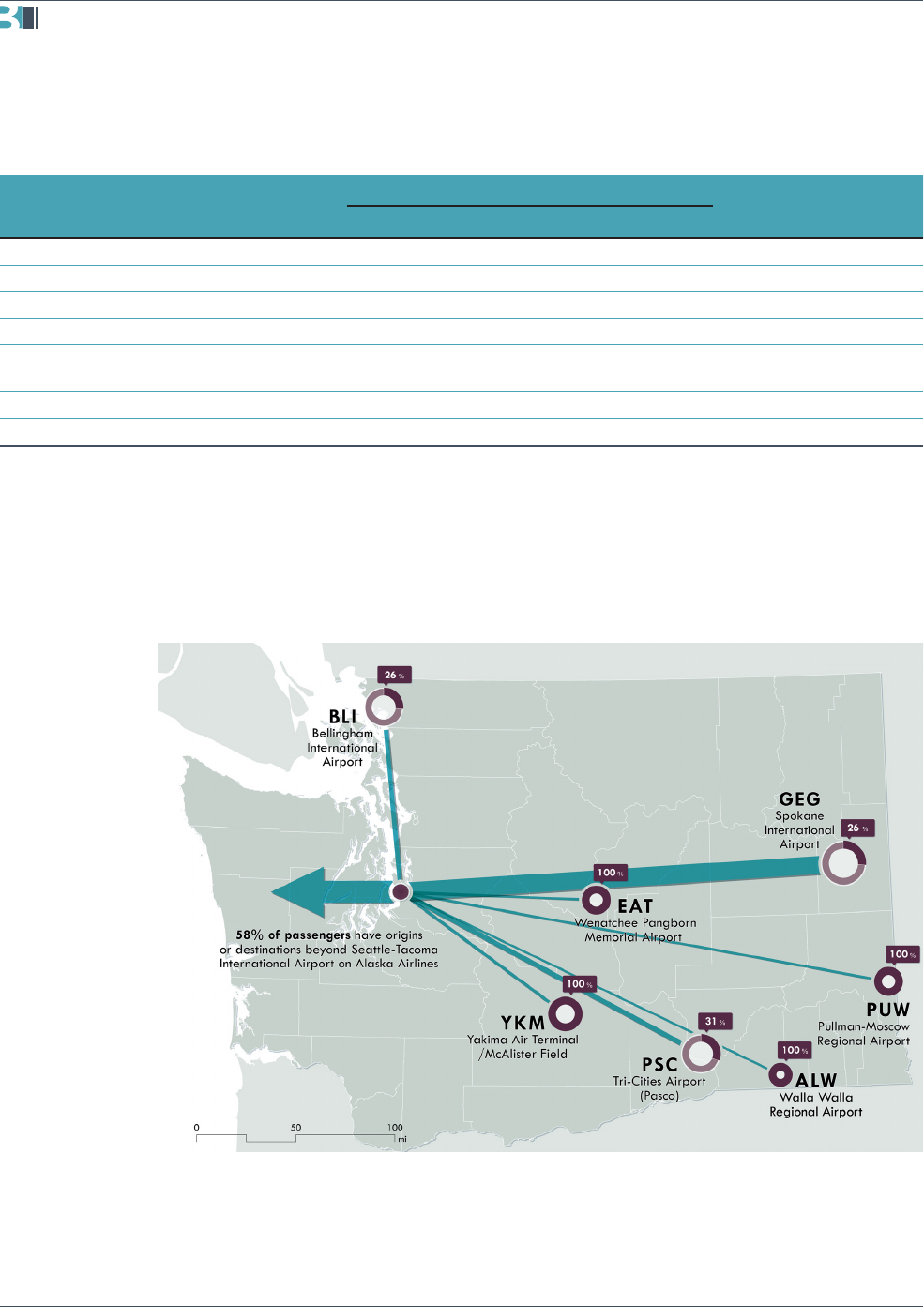
Exhibit 18 Statewide Alaska Airlines and Horizon Air passenger
volume touching Seattle, by origin or destination airport
and percent of total airport volume, 2017.
Source: Alaska Airlines, 2018; BERK, 2018.
Exhibit 17 Statewide Alaska Airlines and Horizon Air passenger volume
statistics for trips touching Seattle, 2017.
2017 PASSENGER VOLUME
% 2017
VOLUME
2016–2017
CHANGEORIGIN DESTINATION TOTAL
GEG Spokane International Airport 425,582 416,262 841,844 26% -6.2%
PSC Tri-Cities Airport (Pasco) 115,914 114,158 230,072 31% -4.0%
BLI Bellingham International Airport 106,907 98,751 205,658 26% -9.0%
YKM Yakima Air Terminal / McAlister Field 70,542 68,588 139,130 100% 0.8%
EAT Wenatchee Pangborn Memorial
Airport
60,731 59,044 119,775 100% 1.9%
PUW Pullman-Moscow Regional Airport 59,096 59,769 118,865 100% -3.7%
ALW Walla Walla Regional Airport 50,011 49,756 99,767 100% 4.9%
Source: Alaska Airlines, 2018; BERK, 2018.
ALASKA AIRLINES · ASSESSING THE ECONOMIC IMPACT OF ALASKA AIRLINES
PASSENGER TRAFFIC AND TRENDS · OCTOBER 201824

CARGO SERVICES
Alaska Airlines and Horizon Air provide cargo services through Alaska Air Cargo.
Historically, Alaska Airlines has served an important role carrying mail and freight between
Alaskan communities and the continental US via Sea-Tac International Airport. Today, Alaska
Air Cargo serves 93 destinations and transports over 170 million pounds of cargo annually,
which is the most extensive air cargo operation on the US West Coast through passenger
airlines.
Alaska Air Cargo recently added three Boeing 737–700Fs used as freighters to existing
freight service on the Alaska Airlines system. In June 2018, Alaska Airlines put 71 Airbus
aircraft from the Virgin America acquisition into use for cargo service. With these additional
aircraft, Alaska Air Cargo expanded its cargo lift capacity by 40% in the continental US.
The increased connections across the country mean that Alaska Airlines and Horizon Air will
provide even more frequent and reliable cargo delivery services for customers.
Although air cargo services provided by Alaska Airlines and Horizon Air in 2017 accounted
for about 7.8% of total freight from Sea-Tac International Airport, there is signicant
potential for future growth with the recent additions to the Alaska Air Cargo eet. This will
position Alaska Air Cargo as a larger competitor for cargo services across the West Coast
and can provide additional support for businesses within the state that rely on air freight
connections to deliver products to market.
Exhibits 19 and 20 provide an overview of the revenue received from cargo transportation
from 2013–2017, with a focus on revenue from outgoing cargo from Washington state and
Seattle-Tacoma International Airport.
Key ndings for current cargo services by Alaska Air Cargo include the following:
Cargo operations have been consistent across all airports. Total revenue generated
from outgoing cargo across all airports has remained relatively steady, around $80
million per year from 2013 through 2017.
Washington state is a major origin point for cargo operations by Alaska Air Cargo.
Outgoing cargo from Washington airports comprises approximately one-third of all
cargo revenue across all airports. Revenue from outgoing cargo in Washington airports
has slightly decreased each year from 2013 to 2017, bringing in $26 million annually in
2013 and $24 million annually in 2017.
Almost all current cargo trafc originating from the state is from Sea-Tac
International Airport. Within Washington state, outgoing cargo from Seattle-Tacoma
International Airport has comprised 97% of the revenue generated from Washington
25
ASSESSING THE ECONOMIC IMPACT OF ALASKA AIRLINES · ALASKA AIRLINES
OCTOBER 2018

airports. The remaining 3% comes from Spokane (2%), Bellingham (0.2%), Pasco (0.2%),
Yakima (0.2%), and less than 0.1% each from Pullman, Walla Walla, Wenatchee, Paine
Field, and Boeing Field.
Signicant changes are expected to air cargo routes and capacity. These gures are
expected to change substantially after the introduction of Boeing 737–700F and former
Virgin America Airbus aircraft to the cargo eet, which has increased cargo capacity
and allowed for new routes for cargo services.
Exhibit 19 Summary of total revenue from Alaska Air Cargo operations, 2013–2017.
Source: Alaska Airlines, 2018; BERK, 2018.
Exhibit 20 Statistics for revenue from outgoing cargo, Alaska Air Cargo, 2013–2017.
YEAR
OUTGOING CARGO
ALL AIRPORTS WA AIRPORTS SEA-TAC AIRPORT
2013 $82.1 M $26.6 M $ 26.0 M
2014 $82.4 M $27.4 M $ 26.7 M
2015 $78.8 M $26.6 M $ 25.8 M
2016 $80.0 M $25.9 M $ 25.2 M
2017 $79.9 M $25.0 M $ 24.3 M
Source: Alaska Airlines, 2018; BERK, 2018.
Note: Non-Washington airports include both airports within and outside of the US.
ALASKA AIRLINES · ASSESSING THE ECONOMIC IMPACT OF ALASKA AIRLINES
CARGO SERVICES · OCTOBER 201826

CHARITABLE GIVING
AAG companies contribute to a range of charitable organizations in Washington, Alaska,
and other locations. Recipients include hundreds of organizations working in education,
economic development, health, and other elds.
Exhibits 21 and 22 provide an overview of charitable giving by AAG companies. Giving
has increased steadily over the last ve years, and in 2017, AAG companies contributed
$14.5 million to charities in total. The greatest recipients of funding have been charitable
organizations in Washington state, with about $8 million contributed in 2017 and a strong
upward trend in local donations.
Exhibit 23 shows the breakdown of the charitable donations made by AAG companies in
2017 by category. The top recipients of charitable giving from AAG companies include
organizations in the following areas:
Education and workforce development, such as Highline School District, Mukilteo
Schools Foundation, and Highline Community College Foundation;
Social, such as Northwest Harvest, the United Way of King County, Southwest Youth and
Family Services, and the Seattle Goodwill;
Medical, such as the American Heart Association, the American Cancer Society, and the
Leukemia and Lymphoma Society;
Civic, such as Challenge Seattle and the Economic Development Council of Seattle &
King County;
Youth, such as the YMCA, the Boy Scouts of America, the Boys and Girls Club, and Girl
Scouts of Western Washington;
Environmental, such as the Woodland Park Zoo, the Seattle Audubon Society, and The
Nature Conservancy;
Arts, such as the 5th Avenue Theatre, the Seattle Art Museum, and the Pacic Northwest
Ballet; and
Sports, such as the Special Olympics and the SeaTac United Youth Academy.
In addition to direct giving, AAG companies provides charitable giving through Employee
Gift Match and Dollars for Doers:
Employee Match refers to the AAG program that provides donations to charities to
match employee contributions. AAG companies matc these employee contributions at
a 1:1 rate, up to $1,000 per year. In 2017, employees of AAG companies raised
$464,759 in funds that were matched for a total of $989,518.
27
ASSESSING THE ECONOMIC IMPACT OF ALASKA AIRLINES · ALASKA AIRLINES
OCTOBER 2018
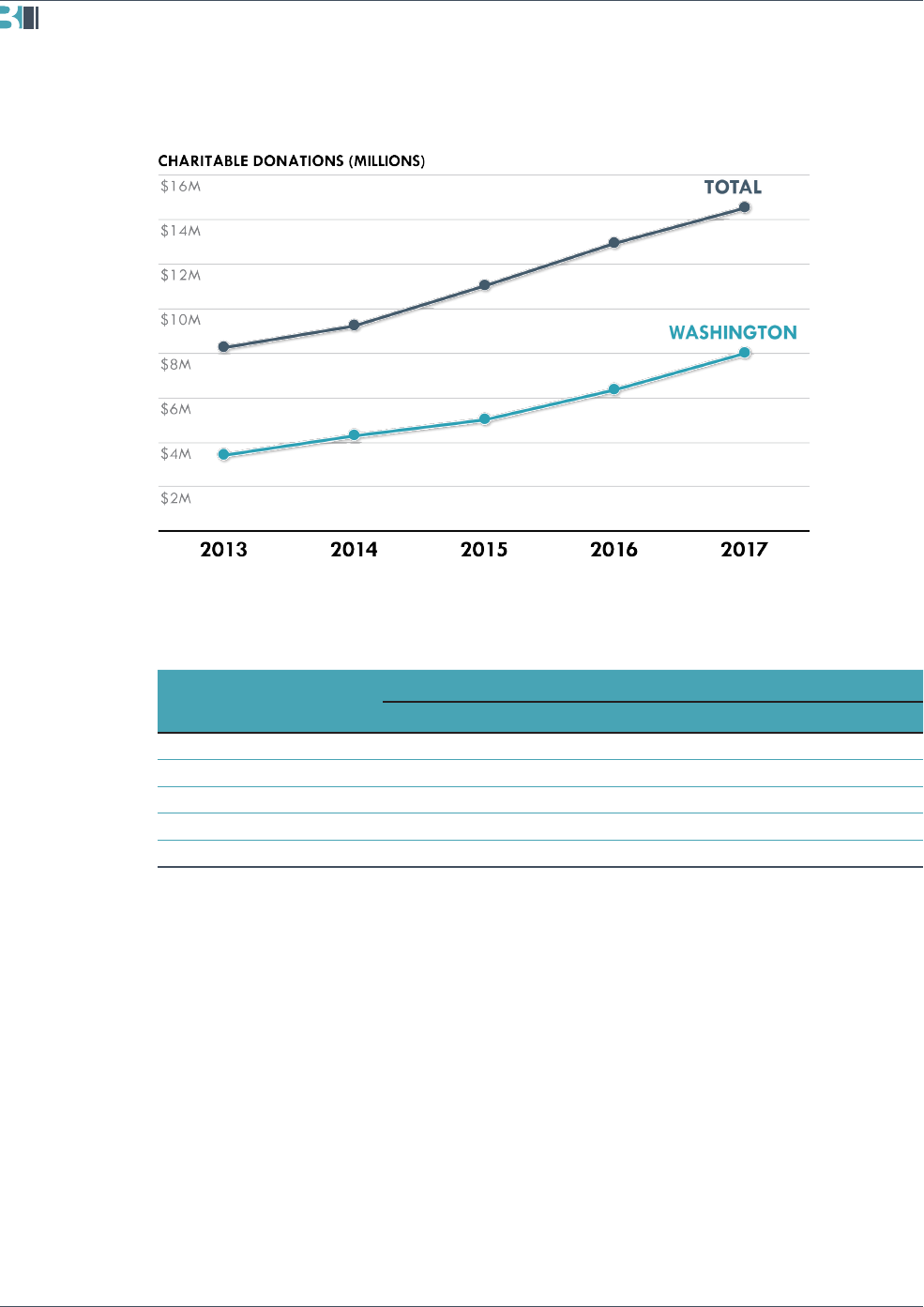
Exhibit 21 Summary of charitable giving, AAG companies, 2013–2017.
Source: Alaska Airlines, 2018; BERK, 2018.
Exhibit 22 Charitable giving statistics, AAG companies, 2013–2017.
YEAR
CHARITABLE GIVING
2013 2014 2015 2016 2017
Washington $3.4 M $4.3 M $5.0 M $6.3 M $8.0 M
Alaska $2.6 M $2.5 M $3.5 M $3.6 M $3.5 M
Other locations $2.2 M $2.4 M $2.5 M $3.0 M $3.0 M
Total $8.3 M $9.2 M $11.0 M $12.9 M $14.5 M
Total (w/other giving) $8.5 M $9.7 M $11.7 M $13.5 M $15.5 M
Source: Alaska Airlines, 2018; BERK, 2018.
Note: “Other giving” includes grants and nancial support, in-kind travel, and employee volunteerism from
AAG companies, including Employee Match dollars and Dollars for Doers
ALASKA AIRLINES · ASSESSING THE ECONOMIC IMPACT OF ALASKA AIRLINES
CHARITABLE GIVING · OCTOBER 201828

Dollars for Doers is a program through which AAG companies provide grants to
nonprots where employees regularly volunteer. Employees are offered a grant of $10
per hour volunteered to that organization, up to $1,000 per employee each year. This
program encourages employees to spend their time volunteering for local causes. In
2017, these employees earned and donated $263,163 by providing 41,760 hours of
volunteer time.
Through these programs, Alaska Airlines invests in local community organizations working in
youth and education, arts and sciences, housing, and health and human services.
Alaska Airlines also contributes through charity miles, in-kind donations, and disaster relief.
Charity miles: In 2017, Alaska Airlines donated 52.3 million miles valued at $1.4 million
to support 10 organizations, including the Fred Hutchinson Cancer Research Center,
Make-A-Wish Foundation, and Angel Flight West.
In-kind donations: In 2017, Alaska Airlines provided airline tickets to over 1,300
nonprot organizations with $7 million in in-kind ticket donations.
Exhibit 23 Breakdown of charitable giving by type, 2013–2017.
Source: Alaska Airlines, 2018; BERK, 2018.
29
ASSESSING THE ECONOMIC IMPACT OF ALASKA AIRLINES · ALASKA AIRLINES
OCTOBER 2018 · CHARITABLE GIVING

Disaster relief: In 2017, Alaska Airlines donated over $375,000 (cash and in-kind) to
relief efforts for hurricanes, wildres, ooding, and an earthquake. Alaska Airlines has
waived travel fees for customers who are affected by natural disasters and added extra
ights to help evacuation from impacted areas.
This analysis of charitable giving highlights the following points:
Charitable donations by AAG companies has increased signicantly since 2013. In
2017, corporate donations amounted to about $15.5 million in cash grants and other
nancial support, in-kind travel, and employee volunteerism, an increase from $13.5
million in 2016. Overall, funding for charitable causes has increased by an average of
15% per year since 2013.
Growth in charitable donations is focused in Washington state. Washington state
charities received about $8 million in 2017, which has increased at an average of over
18% per year and more than doubled since 2013.
Charities working in education, social causes, and medical organizations were
the highest recipients of funds. For donations between 2013 and 2017, the highest
proportion of charitable funds were allocated to charities involving education and
workforce development (35%), social issues (23%), and medicine (15%).
ALASKA AIRLINES · ASSESSING THE ECONOMIC IMPACT OF ALASKA AIRLINES
CHARITABLE GIVING · OCTOBER 201830

CONCLUSIONS
Alaska Airlines provides a strong set of benets to the Seattle metropolitan region with its
major hub at Sea-Tac International Airport and its headquarters in the city of SeaTac. In
addition to providing access to regional, national, and international destinations, Alaska
Airlines supports economic activity within the state and region.
Major economic benets include the following:
Alaska Air Group companies had a local economic impact of about $7 billion in
2017. This impact has had an average of 5.9% yearly growth over the past ve years,
and a 12% increase from 2016.
The Sea-Tac International Airport and the Alaska Airlines headquarters in the city
of SeaTac are major centers of employment, and they are growing. Alaska Air
Group companies include 9,505 employees in the Seattle metropolitan area, including
employees with McGee Air Services. For Alaska Airlines and Horizon Air, employment at
the airport and Alaska Airlines SeaTac headquarters amounts to about 40% of the total
employment across both companies. With the addition of new employees from Virgin
America and McGee Air Services, employment with AAG companies has increased by
about 6.2% per year in the Seattle metropolitan area.
AAG companies supported about 23,561 jobs statewide in 2017, with 2.4 total
jobs created for every job with the companies. In addition to the 9,916 employees
statewide with Alaska Air Group companies, an additional 5,978 jobs are supported by
companies in the supply chain due to business operations, and 7,667 jobs are supported
by the earnings of employees from AAG companies and across the supply chain. This
amounts to a total of 2.4 jobs in the entire state economy for every job created with an
AAG company.
Using local suppliers provides increased benets to the region. AAG companies invest
in business with state and regional suppliers, which boosts the local economy. Purchases
of new aircraft from Boeing created $3.4 billion of economic activity in the region over
the past ve years and supported over 1,700 workers in 2017. The rate of growth
of other vendors has been signicant over the past several years, which has kept the
economic benets of vendor spending in the region and provided opportunities for
locally sourced food and beverage products to gain visibility with Alaska Airlines and
Horizon Air customers.
Alaska Airlines’ network links Seattle and Washington state to the world. Supporting
a world-class hub for national and international travel is essential to a growing region
like the Seattle metropolitan area. Ongoing efforts to expand this network with Alaska
31
ASSESSING THE ECONOMIC IMPACT OF ALASKA AIRLINES · ALASKA AIRLINES
OCTOBER 2018 · CONCLUSIONS

Global Partners means easier access to and from Seattle for business and tourism. This
is also true for other Washington cities, and as Washington airports depend on Alaska
Airlines, Horizon Air, and the Seattle hub for access to other destinations, the company is
an important component for economic development across the state.
Cargo services by Alaska Air Cargo have primarily served outgoing freight from
SeaTac Airport, but increased cargo capacity will change the nature of this business.
Cargo trafc and revenue from the state of Washington and the rest of the Alaska
Airlines network has been relatively stable over the past several years, with about $80
million in revenue per year, with $24 million originating from Washington state in 2017.
Recent additions to the Alaska Air Cargo eet have increased capacity and will have
signicant changes to the future of air cargo in the state.
Charitable donations from Alaska Airlines are increasing, with the largest proportion
of the company’s giving in Washington state. Charitable giving by Alaska Airlines
amounted to $14.5 million in 2017, with an additional $989,000 contributed through
grants and nancial support, in-kind travel, and employee volunteerism (Employee
Match dollars and Dollars for Doers). About $8 million of this was donated to causes in
Washington, an increase of more than 100% in just ve years.
ALASKA AIRLINES · ASSESSING THE ECONOMIC IMPACT OF ALASKA AIRLINES
CONCLUSIONS · OCTOBER 201832
